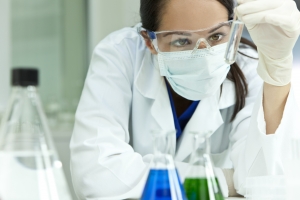In the United States, hazardous chemicals cause more than 190,000 illnesses and 50,000 deaths annually. With the implementation of the GHS and mandatory SDS training, chemical composition and hazard classifications will be more transparent, and thus will improve the health and safety of workers. Although that is one step closer to a safer workplace, another initiative is to use alternative chemicals that are less hazardous.
 Safety – The most obvious benefit of using alternative chemicals is of course the health and safety of the workers. Chemical exposures have been linked to cancers, and other lung, kidney, skin, heart, stomach, brain, nerve, and reproductive diseases.
Safety – The most obvious benefit of using alternative chemicals is of course the health and safety of the workers. Chemical exposures have been linked to cancers, and other lung, kidney, skin, heart, stomach, brain, nerve, and reproductive diseases.
Cost savings – Since the cost of not complying with existing laws or preparing for future regulations can be substantial, by adopting alternative chemicals, companies can expect to reduce expenses and prevent future liability risks.
Corporate stewardship – Transitioning to safer chemicals says a lot about the company, and hence gives “businesses the opportunity to build their brand with a new, green, and innovative image.”
By transitioning to safer chemicals, the number of illnesses and deaths related to chemical exposure can be significantly reduced. For additional information on chemicals in the workplace, please refer to OSHA’s Toolkit to help employers transition to safer chemicals.







